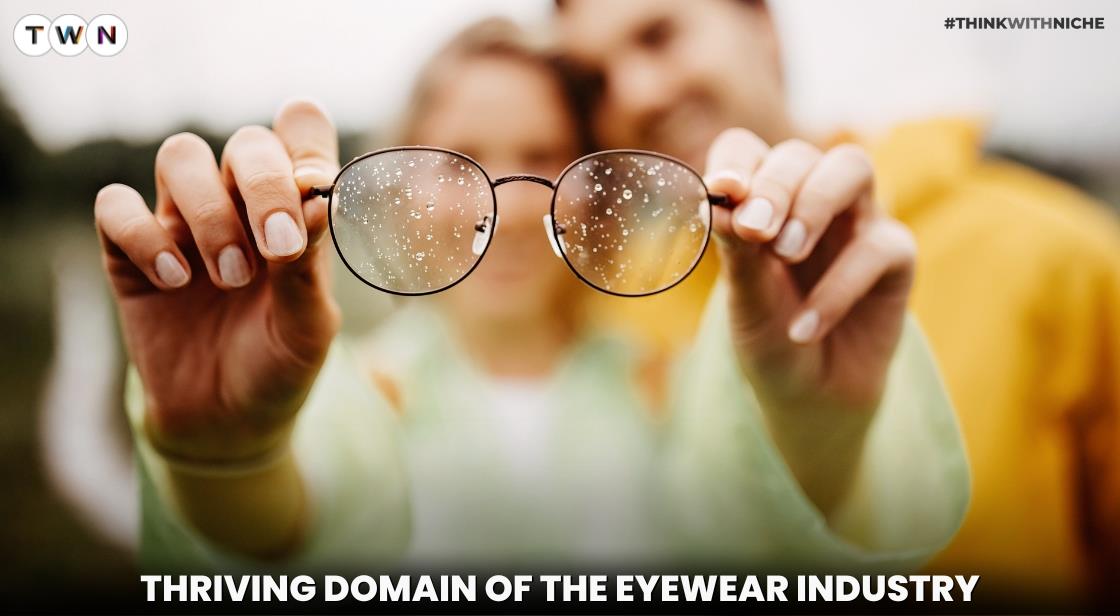Why the Eye Industry is Booming Now and Beyond

Blog Post
The eyewear industry, valued at around $170 billion globally, is on an upward trajectory, poised to soar to $300 billion by 2029. An amalgamation of factors, from evolving eye health concerns to lifestyle shifts and technological advancements, fuels this exponential growth.
As the landscape of consumer habits and health undergoes transformation, the eyewear sector experiences a renaissance, catering not only to vision correction but also fashion sensibilities and technological needs.
Let's delve deeper into the thriving domain of the eyewear industry, dissecting its growth drivers, market statistics, changing consumer behaviors, the impact of technological advancements, and the promising future trends that promise to reshape how we perceive and engage with eyewear.
Globally, the eyewear industry is worth around $170 billion and is forecast to hit $300 billion by 2029. The market falls under four main categories: frames, spectacle lenses, contact lenses, and sunglasses, with each expected to grow over the coming years.
The reason for the significant year-on-year rise in the value of the eyewear industry, particularly in the US, is likely to be connected with a decrease in general eye health, improvements in life expectancy rates, and market segments with more disposable income to spend on luxury eyewear products and accessories, such as designer sunglasses.
Why the Eye Industry is Booming Now and Beyond
The Eyewear Industry Stats
Statistics for the eyewear industry are pretty impressive. The US represents the largest buyer of eyewear products, racking up $30.87 in sales in 2022, and it’s estimated that 71% of these sales are of non-luxury eyewear. A significant increase in the number of people suffering from ocular disease and the fact that around 60% of Americans suffer from digital eye strain is a major driver of these figures. Experts predict that the eyewear industry will see growth in the region of 6 - 7% over the next four years.
The Covid pandemic also had a major impact on the eyewear industry and market trends. The need to undertake online learning and digital remote working meant more people than ever before were spending longer on their devices, further driving up cases of eye strain and fatigue, and creating a spike in sales of blue-light blocking and reading glasses.
Bue-light-blocking lenses serve to filter out a significant amount of the blue light emitted from devices, to provide a more comfortable digital experience.
How Consumers Buy Eyewear
As the statistics show, the majority of the eyewear industry’s net worth is generated by sales in the US. Interestingly, drilling down into these stats still further, the average number of pairs of glasses owned by an American is 3.34. And most of these sales are made up of prescription or ‘practical’ glasses as opposed to sunglasses and fashion eyewear.
There are shifts, however, with, for example, the contact lens industry capturing a larger growth of the eyewear industry market share in recent years.
The Impact of Changing Eye Health
Increasing life spans have led to more people than ever before requiring, for example, bifocal or progressive lenses to correct age-related eyesight issues. There is also ongoing debate over the extent to which an ever-increasingly digital world may be contributing to the degeneration of eyesight which is further fuelling a boom in the eyewear industry.
There has been a dramatic increase in the incidences of cataracts and open-angle glaucoma in those aged forty and over, and digital eye strain has become a now-common problem encountered by ophthalmologists.
Also Read : How Business Analytics can Help Your Business Grow
The Rise of the Contact Lens
In 2022 the contact lens market segment had a revenue share of around 10% 2022 and, like the rest of the eyewear market, is expected to grow significantly over the coming years. This is being driven up by the launch of advanced new lens types, such as multi-focal toric lenses and light-adaptive lenses. Further supporting the increase in contact lens sales is the widespread use of materials in the manufacture of lenses that offer a more comfortable wearing experience, with fewer incidences of irritation.
Enhancing Customer Experiences
Eyewear companies and brands are increasingly working to improve customer experiences, to help maintain (and grow) their share of the market. Companies now regularly offer online virtual try-on tools, so that customers can more easily shop from the comfort of their home, without running the risk of ending up with a set of frames that don’t suit them.
The offer of innovative new products is also helping eyewear companies to stay visible. For example, the Crypto King$ Limited Edition model was launched by De Rigo Vision S.p.A. in partnership with the brand Philipp Plein, in September 2033. These glasses boasted a unique luxury aesthetic, and every pair had its own serial number and came with an exclusively designed case that incorporated a video screen.
The Eyewear Industry: The Future
The future is looking exceptionally bright for the eyewear industry, with all market sectors expecting a boom in sales over the next seven years and beyond. This is great news for consumers, too, who are having increasingly affordable access to prescription lenses, including specialist lenses such as progressives.
The future in this industry is an exciting one, with tech providing the means for brands to create ever-more personalized glasses, contact lenses, and sunglasses incorporating AR tools and more for a truly holistic eyewear experience.
Conclusion:
The eyewear industry stands at the cusp of an evolutionary phase, propelled by multifaceted forces and transformative trends. From the surging demand for advanced eye health solutions to the convergence of fashion and technology, this sector witnesses a remarkable metamorphosis.
As consumers become increasingly conscious of eye health and fashion preferences, the industry responds with innovation. Advanced lenses, stylish frames, and contact lens developments redefine the market, catering to diverse needs and preferences.
Additionally, the integration of tech-driven solutions, like AR tools and virtual try-on experiences, reshapes customer interactions, ensuring a personalized and engaging journey.
With a promising future forecasted for all segments—prescription lenses, contact lenses, and fashion eyewear—the eyewear industry embraces accessibility and sophistication.
As technology continues to advance, the horizon expands, promising a world where eyewear transcends mere functionality, offering a holistic and personalized experience for every individual.
The journey ahead for the eyewear industry is one of innovation, accessibility, and personalization, heralding a future where clarity of vision converges seamlessly with style and technological sophistication.
You May Like
EDITOR’S CHOICE












